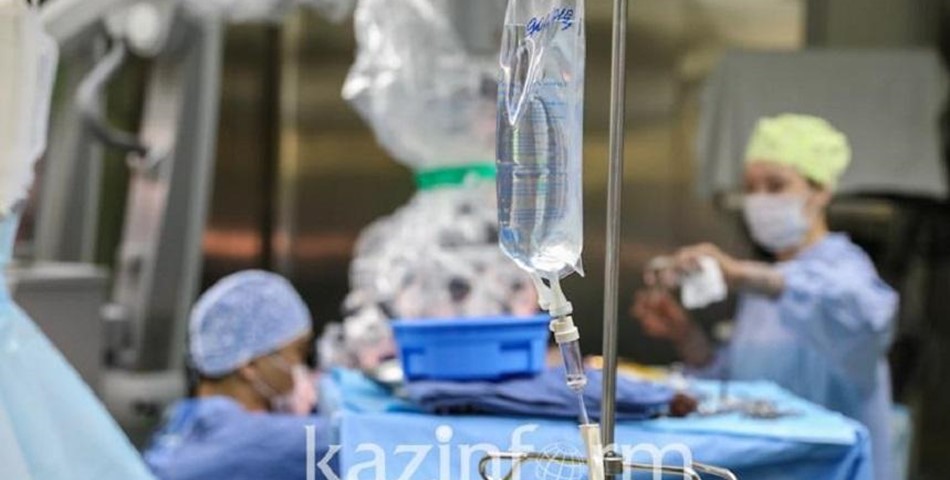In the regions of the country there are more than fifty neurosurgical departments, where the transfer of the latest technologies is carried out on an ongoing basis.
A three-day International Neurosurgical Forum ended in the capital, which was attended by leading neurosurgeons from 15 foreign countries. One of the organizers was the National Center for Neurosurgery, the flagship of medical innovations.
Sometimes brain surgery is compared to rocket science to emphasize its complexity. Small mistakes in decision-making, planning, or execution can have dire consequences. Realizing this, the state pays special attention to the technical equipment of neurosurgical departments and centers.
"In the regions of the country, there are more than fifty neurosurgical departments, where medical technologies are transferred on an ongoing basis, in particular innovative technologies in spine and spinal cord surgery, microneurosurgery, neuro-oncology, minimally invasive methods of treatment, endoscopic operations on the brain and spine. In total, 62 technology transfers to the regions were made. In addition, stroke centers have been opened in all regions of Kazakhstan today, which allows us to provide citizens of our republic with highly qualified medical care and increase their life expectancy," Deputy Prime Minister Yeraly Tugzhanov said during his speech.
He also added that at the exhibition of the International Neurosurgical Forum, the latest technologies and innovative approaches in the field of neurosurgery were demonstrated. According to him, this direction is under the special control of the government of the country.
The first in the list of innovative technologies presented at the neurosurgical forum was the ultrasonic destructor-aspirator.
"This device is an ultrasonic destructor and a bone scalpel. It is designed for the delicate removal of hard and soft tissues during surgery on the brain and spinal cord. Its main difference from conventional similar devices is that it works through ultrasound. So, for example, if we consider traditional tools, such as a surgical wire saw or an electric knife, they completely burn out tissues. And the bone scalpel, in turn, delicately destroys the tissues and their bone-marrow aspiration occurs, " Dmitry Vinokurov, a representative of the distribution company of the device said.
"In other words, when using the device, we do not see the mechanical oscillation of the handle, which allows the neurosurgeon to selectively remove hard tissues without damaging soft tissues, and vice versa. Specialists in the field of neurosurgery know how important this moment is when performing operations on the brain. After all, there are certain nerves and blood vessels, damage to which can lead to irreparable consequences. Before the advent of this innovation, all neurosurgeons tried to avoid and minimize this risk based only on their experience. But with this device, the probability of touching key blood vessels and nerves is reduced by 50 percent, since this bone scalpel does not have a sharp tip and works perfectly on a different principle. And this is what radically changes the current approaches and methods of conducting neurosurgical operations," Dmitry Vinokurov added.
He also said that to date, this destructor-aspirator is installed in many hospitals in Kazakhstan, which is undoubtedly a breakthrough for Kazakhstani medicine.
"In our practice, there are deep brain tumors, which are often located in hard-to-reach places and can be small in size. And, to conduct precise localization by neurosurgeons and determine the exact size and boundaries of the tumor, a stereotactic frame is used. From math lessons, we remember that there are three models X, Y, and Z, a coordinate system in space. So, the brain tumor is clearly in these three planes, and thanks to the fixation of the stereotactic frame, neighboring brain structures do not touch. This avoids unwanted damage to healthy brain tissue when removing tumors," neurosurgeon Zhulduz Sadykova said.
"A topographic model of the patient's brain is personally recreated, in three planes the size of the pathological processes that the neurosurgeon plans to remove are determined. This model integrates with the patient's head to gain access to the deep structures of the brain. Through this, further necessary procedures are performed, such as a brain biopsy, surgery, implantation of electrodes, etc. Stereotactic frame is extremely necessary in treatment and plays a key role in the localization and identification of underlying pathological processes. That is why now it is widely used in all major neurosurgical departments of the country, including the Neurosurgical Center in Nur-Sultan," Zhulduz Sadykova emphasized.
Another object of innovative technologies at the exhibition was the system of intraoperative neuronavigational.
"This system allows doctors intraoperatively, that is, right during the operation, to track the place where they are now. The intraoperative neuronavigational system is used during operations on both the brain and back, as well as in ENT surgery. It often happens that the operating doctor cannot always understand which part of the brain during the operation it is in, because the structure of the tissues, blood and anatomy can be quite similar. The peculiarity of navigation is that it can accurately show the location of the operated site, " Arlan Kanabayev, a representative of a private company for the sale of medical equipment in Kazakhstan said.
This probe, during electromagnetic navigation, demonstrates on the screen the location of the neurosurgeon's instruments, it tracks every movement of the doctor.
"When immersed in brain tissue, it is possible to virtually plan access to the tumor and track it. In the presence of deep tumors, a displacement at the entrance point of even 1 millimeter can lead to a displacement at the endpoint by 2 centimeters, which is extremely critical. It is for these purposes that the intraoperative neuronavigational system is needed," the specialist added.
According to him, it is possible to compare this system with a conventional GPS-navigator, which we use every day. So, we set the point where we want to go, and the navigator shows our current location and plots a route to a given point. According to the same principle, intraoperative work and neuronavigational.
"In Kazakhstan, we have about 15 units of equipment of this generation for use in neurosurgical practice. There are also intraoperative neuronavigational systems of the previous generation, two of them are located in the capital's Neurosurgical Center. The demand for this equipment is due to the fact that with a well-developed scheme of work, not only the risks are significantly reduced, but also the time of brain operations. For example, if the tumor is located deep in the brain at a depth of, say, 8 centimeters, it is very difficult to get into it and the risk of missing is great. In addition, during the removal of the tumor, it is possible to check whether the tumor has been completely removed," Arlan Kanabayev added.
Thus, we see that today the development of medicine in Kazakhstan is proceeding at a dynamic pace. Innovations in domestic neurosurgery, which is one of the youngest surgical specialties, have significantly reduced the incidence of complications during operations and made them much safer for patients.
Source: Kazinform











